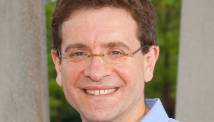KATHMANDU: The remorse felt by Himali Chungda Sherpa after he killed three snow leopard cubs in retaliation for his lost cattle inspired him to set up a scheme to prevent other herders from doing the same.
Sherpa lost his cattle near Ghunsa village at the base of Mount Kangchenjunga on the Nepal-India border, later finding their remains in a cave beside three sleeping snow leopard cubs.
The Nepalese herder put the cubs in a sack and threw them into the river, finding their bodies the next day.
"From that night onwards the mother snow leopard started crying from the mountain for her cubs, and my cattle were crying for the loss of their calves."
"I realised how big a sin I had committed and promised myself that I would never do such a thing in the future."
Four years ago Sherpa, 48, founded with other locals an insurance plan for livestock that conservationists say is deterring herders from killing snow leopards that attack their animals.
In doing so the scheme has given hope for the endangered cat, whose numbers across the mountains of 12 countries in south and central Asia are thought to have declined by 20 percent over the past 16 years.
Under the scheme, herders pay in 55 rupees a year for each of their hairy yaks, the vital pack animal that is also kept for milk and meat, and are paid 2,500 rupees for any animal killed by the endangered cat.
"The (Himalayan) communities have been able to pay out compensation for more than 200 animals since the scheme started," WWF Nepal conservation director Ghana Gurung told reporters at a presentation in the capital Kathmandu.
"The community members are the ones that monitor this, they are the ones who do the patrolling and they are the ones who verify the kills."
The global snow leopard population is estimated at just 4,080-6,590 adults according to the International Union for Conservation of Nature, which lists the animal as "endangered" on its red list of threatened species.
Experts believe just 300 to 500 adults survive in Nepal, and few can claim ever to have seen the secretive, solitary "mountain ghost", which lives 5,000 to 6,000 metres above sea level.
Despite its name, it is not a close relative of the leopard and has much more in common genetically with the tiger, though it is thought to have a placid temperament.
"There has never been a case of a snow leopard attacking a human," Gurung said of the animal, revered for its thick grey patterned pelt.
It does, however, have a taste for sheep, goats and other livestock essential for the livelihoods of farmers and is often killed by humans either as a preventative measure or in revenge for the deaths of their animals.
WWF Nepal revealed details of its insurance scheme in filmed interviews shown at the recent Kathmandu International Mountain Film Festival.
Sherpa now campaigns to convince Himalayan farmers that killing snow leopards is wrong, but has been frequently told they need to kill the animal to protect their livelihoods.
"I swear if I can catch a snow leopard. They rob our animals and our source of livelihood," herder Chokyab Bhuttia told the WWF.
The insurance plan, which also covers sheep and goats, was set up with 1.2 million rupees donated by the University of Zurich.
Since the Kangchenjunga Conservation Area Snow Leopard Insurance plan was launched four years ago no snow leopard is thought to have been killed in retaliation for preying on livestock since.
Locals, who count the number of cattle attacked as well as tracks, faecal pellets and scratches in the ground, believe snow leopard numbers have significantly increased.
"There is now an awareness among people that the snow leopard is an endangered animal and we have to protect it. The insurance policy has made people more tolerant to the loss of their livestock," Sherpa said.
He believes protecting the snow leopard is vital to boosting the economy in an area which gets just a few hundred trekkers a year, compared with 74,000 in Annapurna.
"If a tourist sees a snow leopard and takes a picture of it there will be publicity of our region and more tourists will come," Sherpa said.
Evidence of the scheme's benefits will remain anecdotal until the publication next year of the results of a wide-ranging camera trapping survey.
But locals are optimistic about the animal's future, according to Tsheten Dandu Sherpa, chairman of the Kangchenjunga Conservation Area Management Council.
"In this area there was never any poaching of snow leopards for trade. They were killed only as a retaliatory act by livestock owners," he said.
"Now with this insurance policy there will definitely be protection of the snow leopard and its numbers will increase."
-AFP/fl














